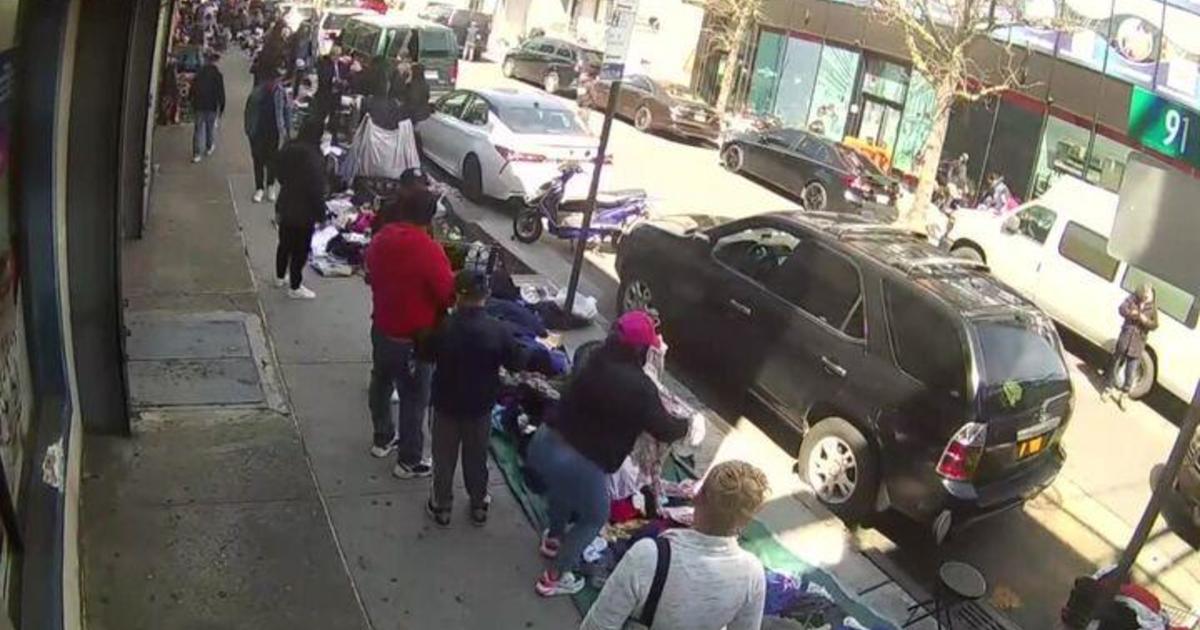Not All Of Manhattan's Bedbugs Are The Same, Research Shows
NEW YORK (CBSNewYork/AP) -- Scientists have mapped the genome of the bedbug, then used it to follow an army of the nefarious pests through the New York subway system.
In the grubby recesses of hundreds of stations, they discovered something surprising: genetic diversity among the bloodsucking creatures.
"The genetic information suggests that bedbugs running north and south are more closely related than bedbugs on, say, Manhattan's West Side versus the East Side,'' said Christopher Mason, a geneticist at Weill Cornell Medicine's Institute for Computational Biomedicine who worked on the project with the American Museum of Natural History.
"To them the area of the city is the size of the planet to us, and so they have the same differences in their genetic makeup and also what makes them family members in different areas of the city," Mason told 1010 WINS.
"Very broad trends appear when you look at different boroughs," Mason told WCBS 880's Alex Silverman.
Not that the bedbugs are riding the subway, noted George Amato, an evolutionary biologist at the museum who worked with Mason on the joint bedbug project.
But in Manhattan, subway lines run from north to south the length of the island, while there's no subway link between East and West.
And so, New York's bedbugs "move around with people, dogs, and peoples items -- and they probably move most easily the way people move most easily,'' Amato said.
A bedbug colony at his famed museum was used for the genetic map that was assembled by an international research team including 36 institutions.
The New York team's resulting scientific paper on the subject was published Tuesday in Nature Communications. A second paper on bedbug genetics, from the University of Cincinnati, also appeared Tuesday in the same publication.
To learn how the bedbug has evolved and spread, the New York team took DNA samples from 1,400 city locations including subway cars and parks. College student volunteers swarmed the underground three years ago to start collecting the samples, swabbing everything from turnstiles and ticket vending kiosks to train interiors.
The scientists are not sure exactly how or when bedbugs got into a subway system used by nearly 6 million people daily. The critters were traced using DNA that they left behind.
Amato said the first rough bedbug genetic sequence emerged about a year ago, but it took months to refine the model into an accurate genome.
"Before this, people were just feeling their way through in the dark; this genome turns the light on for various areas of other research,'' said Amato. "Our team is now moving on to the genetics of cockroaches and other living fossils.''
The next big step would be to use the new genetic information, and any variations, to invent more effective insecticides to which bedbugs might not be resistant. The genetic breakthroughs also could improve human blood thinners. Bedbugs process blood in such a way that it does not clot, which in humans creates the danger of a stroke.
"Given this basis of insecticide resistance, we can now pick the right pesticide to treat some of them, if you have an infestation," Mason said.
(TM and © Copyright 2016 CBS Radio Inc. and its relevant subsidiaries. CBS RADIO and EYE Logo TM and Copyright 2016 CBS Broadcasting Inc. Used under license. All Rights Reserved. This material may not be published, broadcast, rewritten, or redistributed. The Associated Press contributed to this report.)



